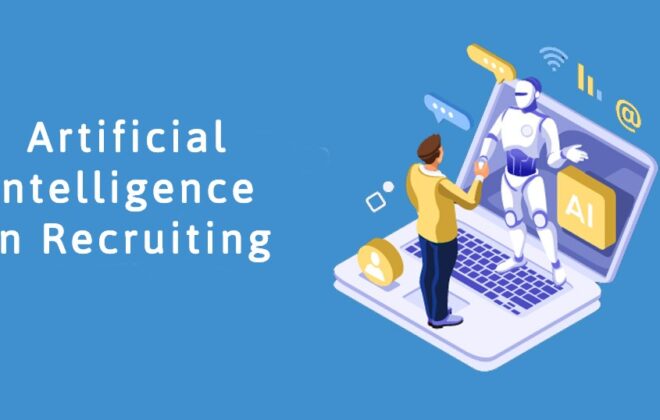What Is A Blended Workforce Model? How Can You Prepare For It?
If we talked about the blended workforce a few years back, the concept would have sounded absurd. Working with multiple kinds of workforce setup wouldn’t have made practical sense. But fast forward to today, there has been a 180-degree shift in how companies view the workforce now.
CoVID-19 has made it abundantly clear that companies cannot take the future for granted. They should be ready to adopt new solutions in order to be prepared for the changing workforce demands and dynamics.
As a result, many companies are actively contemplating using the blended model while others who were fast and farsighted enough have already adopted it.
Blended Workforce
What exactly is the blended workforce model?
A blended workforce is a combination of permanent and gig workers working in tandem as part of a single workforce. Gig workers range from part-time, contractual, consultant to freelancers and SOW workers. The contingent workforce comprises staff from different locations who do not work on company payrolls and are hired for a designated period.
![]()
The adoption of technology in the last few years has made working in a blended approach a lot easier. Companies can now search for gig workers on the new crop of on-demand platforms like Upwork, Gigster, and more.
Blended workforce model gives a company the flexibility to place the right talent in the right projects at the right time. It enhances workforce optimization by allowing companies to expand or contract their workforce arrangement as and when required. Plus, the economic benefits blended workforce model provides further eases of the company’s burden.
Benefits of Blended Workforce
1. Lower Staffing Overhead
![]()
Hiring a permanent employee is quite expensive in comparison to the contingent staff. This is attributed to the additional expenses of the salaried employees which include salary, insurance, bonuses, retirement packages, and more.
On the other hand, getting started with a contingent workforce does not demand any of this. Their work with the company is time and task-sensitive. That means these workers are paid only for the decided time and work and their compensation is devoid of any bonuses, retirement packages, company benefits, and more. Which is a major reason why the contingent staffs are less costly for a company.
The optimized way to employ contingent staff is on short or non-core work where the dependency on the employee is short-lived or has a lesser impact on the company functions.
For instance, if you are planning to hire a UI/UX developer for a one-time development project. Then it would be wise to opt for a freelancer who can get the project done in the stipulated time and can be released upon project completion. Hiring a permanent employee for such a short-lived requirement would be time and money expensive.
2. Scalability
Scaling an on-demand workforce becomes a lot effortless if companies have the right network in place. Platforms like Upwork, Toptal, Catalant, and Gigster provide you access to a large network of freelancers without much hassle and make the talent search process a lot quicker.
Since there is no long-term commitment with the gig workforce and minimum contractual obligations, it is easy for companies to scale their workforce up and down as required.
Even if the project shuts down the next month, releasing the contingent workers would be a lot easier than firing a full-time employee.
3. Innovation and Diversity
Innovation and diversity are some of the most prominent reasons why companies should opt for a blended workforce structure.
Working in an on-demand setup gives contingent staff the agility to work on different projects in their lifetime. And their multi-industry exposure expands their scope of understanding to multi-folds. Which is a major challenge with people working in the same background or experience.
Further, full-time and contractual workers working in tandem also promise to be a great combination for innovation. It cushions the brand with stability. At the same time, challenges their risk appetite for the new ideas.
Platforms to Find Talent
![]() Over the last two to five years, companies like Amazon, Enel, Royal Dutch Shell, Unilever, and Prudential PLC have adopted the blended model. They discovered an innovative, technology-led solution to closing the gap for high-skills talent also called digital talent platforms.
Over the last two to five years, companies like Amazon, Enel, Royal Dutch Shell, Unilever, and Prudential PLC have adopted the blended model. They discovered an innovative, technology-led solution to closing the gap for high-skills talent also called digital talent platforms.
These early adopters realized that there is plenty of talent to be found—if only they looked for it differently. Instead of hunting for full-time employees to join the organization, they began searching for part-time talent outside the company. To do this, they used a new batch of technology-led companies such as Toptal, Catalant, Upwork, Infojini, and Fiverr.
These intermediaries use their platform to match the highly skilled, capable talent with the company’s diverse needs such as finance, legal, medical, marketing, and more.
Related Articles: Revamp Your Contingent Talent Experience in These 3 Steps
Collaboration in Blended Workforce
Managing a scattered workforce can be tough. Workers can be working from different locations, time zones, and schedules. This can often lead you into the ‘out of sight, out of mind’ setup – which is dangerous for the company, project, and the workers.
Leaving half of your staff unattended and unengaged can directly hamper productivity, communication, and output as well as tamper employee motivation.
Therefore, companies must create technology platforms to set up a middle ground between the internal and external staff. Platforms where contingent and payroll workers can brainstorm and engage together – an all-inclusive platform.
To achieve this, you can adapt communication approaches like –
- Use project management tools like Slack
- Include contingent workers in project mails
- Use team chat applications
- Conduct regular video conferencing to inform, educate and communicate
Conclusion
Early adopters like Amazon, Unilever, and more have become more comfortable with sourcing contingent talent and working in a blended setup. They have started moving towards a blend of full-time and part-time workers and are doing all it takes to set up a balance between them.
Be it in form of creating contingent workforce policies, adopting new collaboration tools, or doing some tweaks here and there. And the emerging digital communication and talent platforms are making it further possible for companies to adopt an on-demand workforce model
Subscribe For Updates
Categories
- Accountant
- AI
- Automation
- Awards and Recognitions
- Blue Collar Staffing
- Burnouts
- Campus Recruiting
- Cloud
- Co-Ops agreements
- Company Culture
- Compliance
- contingent workforce
- Contingent Workforce
- COVID-19
- Cyber Security Staffing
- Data Strategy
- Digital Transformation
- direct sourcing
- Distributed Workforce
- Diversity
- Diversity & Inclusion
- Economy
- Events & Conferences
- fleet industry
- Gig Economy
- Girls in Tech
- Global Talent Research and Staffing
- Government
- Healthcare
- Healthcare Staffing
- Hiring Process
- Hiring Trends
- Home Helathcare
- HR
- HR Practices
- HR Tech
- IT
- Labor Shortages
- Life Science
- Local Governments
- News
- Nursing
- Payroll Staffing
- Public Sectors
- Recruiting
- Remote Work
- Skill Gap
- SMB Hiring
- Snowflake
- Staffing
- Staffing Augmentation
- Staffing Challenges
- Talent ROI
- Tech Staffing
- Technology
- Tips & tricks
- Total Talent Management
- UI/UX Design
- Uncategorized
- Veteran Staffing
- Veterans Hiring
- Veterans Hiring
- Workforce Management
Recent Posts
- Automation in Recruiting: From Chatbots to Predictive Screening
- Gig Economy Expansion: The Impact on Talent Pools and Business Models
- Skills-Based Hiring: Why Credentials Alone Don’t Cut It in 2025
- Procurement 3.0: AI & Intelligent Automation in 2025
- Q3 Is Here: Is Your Contingent Workforce Strategy Falling Behind?
Newsletter
Archive
- September 2025
- August 2025
- June 2025
- April 2025
- March 2025
- December 2024
- November 2024
- October 2024
- September 2024
- August 2024
- July 2024
- June 2024
- May 2024
- April 2024
- March 2024
- February 2024
- January 2024
- December 2023
- November 2023
- October 2023
- September 2023
- August 2023
- July 2023
- June 2023
- May 2023
- April 2023
- March 2023
- February 2023
- December 2022
- November 2022
- October 2022
- September 2022
- August 2022
- July 2022
- June 2022
- November 2021
- October 2021
- September 2021
- August 2021
- July 2021
- June 2021
- May 2021
- April 2021
- March 2021
- February 2021
- January 2021
- December 2020
- November 2020
- October 2020
- September 2020
- August 2020
- July 2020
- June 2020
- May 2020
- April 2020
- March 2020
- February 2020
- January 2020
- December 2019
- November 2019
- October 2019
- September 2019
- August 2019
- July 2019
- June 2019
- May 2019
- January 2019
- December 2018
- November 2018
- October 2018
- September 2018
- August 2018
- July 2018
- June 2018
- May 2018
- April 2018
- March 2018
- February 2018
- January 2018
- December 2017
- November 2017
- October 2017
- September 2017
- August 2017
- July 2017
- June 2017
- May 2017
- November 2016
- October 2016




